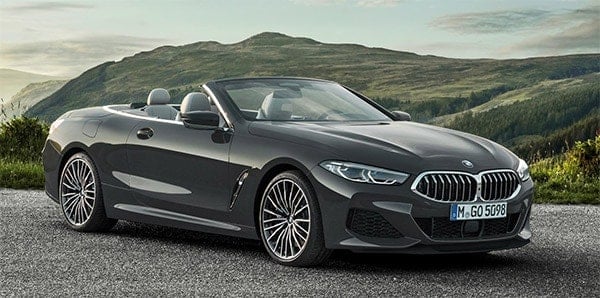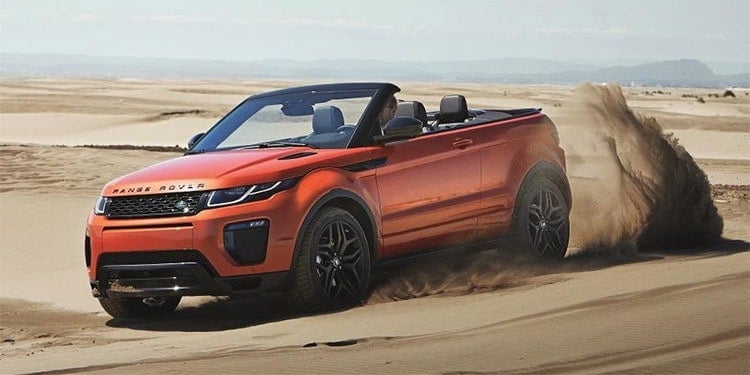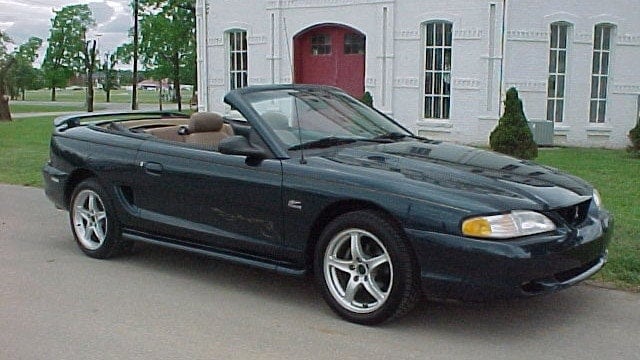Is Buying a Convertible a Good Idea?

There’s no doubting the fact that convertible cars are not always the most practical vehicles you can buy, but have you ever wondered if buying a convertible is a good idea or not?
A convertible could be a good idea when you are trying to maneuver and park in a particularly tight space or if you’ve parked a garage where there isn’t enough room to open the doors to get out. For most people though, buying a convertible is more about them being cool and having a lot of fun when the weather is nice.
Actually, there are some other reasons why buying a convertible can be a sensible move, but let’s start by looking at different types of convertible because not all convertibles are created equal.
Types of convertible
When most of us think of convertibles we probably imagine a two-door sports car with the roof folded all the way down, but there are quite a few different styles of vehicles that can all be considered convertibles. The types available include:
- Sports cars
- 2+2 sports cars
- Four-seaters
- Folding hardtops
- Retractable fabric roof cars
- Targas
- Roofless
- Convertible SUVs
Sports cars are those classic two-seaters, but there are also some that are technically classed as 2+2 models where they technically have four seats, but those in the back are only really suitable for a couple of carrier bags of groceries. Classic convertible sports cars include the likes of the Mazda MX-5 Miata and the Mercedes-Benz SLK.
Four-seaters are larger and more practical, but those rear seats can still be pretty small in some cases. The Audi A5 and BMW 4 Series convertibles are seriously tight for space in the back seats, but there are models like the Mercedes-Benz S Class convertible that are actually quite spacious in the back seats.
When most people think of a convertible these days, they think of a roof that folds away with the push of a button. However, there are two types of folding roof as they come in both fabric and hard versions. A few years ago, folding hardtops were the in thing, with models like the BMW 3 Series and Mercedes-Benz SLK opting for this all-year-round practical solution.
However, more and more convertibles are now returning to fabric versions for reasons of cost, space and weight. A folding hardtop is cool, but they are expensive, they take up almost every inch of trunk space, and they weigh a lot. The weight is a big problem for convertibles because they are already heavier than a sedan or coupe version of the same car for reasons I’ll discuss later.
By the way, if you’d like to know about some of the very best products, services and companies I’ve found for buying, selling, and helping with vehicle ownership then please check out my recommended products and services page right here. As well as telling you where to go to get the very lowest prices on new and used vehicles, I also cover finance, insurance, parts, tires, detailing and other stuff too.
There’s another type of retractable fabric roof that could be considered a convertible, but I would say is really just a large sunroof with a vinyl cover instead of a glass or metal sliding cover. The Fiat 500C is a good example of this type of convertible. I think they’re more trouble than they’re worth, but I don’t like the Fiat 500 in any of its forms, to be honest.
Like the type of roof the 500C has, I’d say the Targa top isn’t really a convertible at all. Targa tops are two removable sections of roof above the driver and passenger seats, but even when they are removed, there’s still a section of the roof between the two front seats. This type of roof is found on some Porsche 911s and other models such as the Pontiac Firebird and the Toyota MR2.
Once again, it’s open to debate as to whether an entirely roofless car is really a convertible, but some are and some are not. Early Dodge Vipers didn’t have any sort of roof, so it’s hard to call them a convertible. However, there are some cars like the Toyota MR2 that had a hard roof that could be completely removed. The trouble with this type of roof is it has to be stored in a garage or somewhere similar due to its size, and if you get caught out in the rain you’re just going to have to accept getting wet because your roof is still at home.
Another convertible genre that’s seeing a few more entrants to the market recently is the convertible SUV. It was probably inevitable that this would become a thing as SUVs and crossovers now dominate the market, but it’s perhaps surprising that there aren’t more of them and that they don’t appear to be getting much love.
We’ve actually had convertible SUVs for a lot longer than some people might imagine, but the most famous and most common convertible SUV is the Jeep Wrangler and most people just think of it as the Wrangler, and not necessarily as a convertible. It’s a convertible though, of course, and in some of its formats, it’s probably the most convertible and open to the elements vehicle you can buy.
Nissan used to do produce the Murano CrossCabriolet, and Jaguar Land Rover is now selling a convertible version of the Range Rover Evoque. Volkswagen will soon have a T-Roc cabriolet too, but it doesn’t look as though convertible SUVs will ever become a big-selling segment of the auto market.

Cons of convertibles
For the rest of this article, when I refer to convertibles I mean those with metal or vinyl tops that fold away with the push of a button or soft tops that manually fold away into the trunk. I mean models like the Mustang, Mercedes C-Class, BMW 4 Series and Buick Cascada. It doesn’t matter whether your roof is metal or vinyl, there are some issues that both share.
The first thing is they can be expensive compared to coupe versions of the same car. You could be forgiven for wondering why, especially when it comes to those with vinyl roofs as vinyl is cheaper than metal, right? The problem is that convertibles need additional structural reinforcement to maintain the vehicle’s rigidity when the roof is down, and also when the roof is up in the case of a fabric roof. There’s also the added cost involved with the electrical mechanism for raising and lowering the roof.
The structural rigidity issue raises further problems for convertibles, and one of them is weight. Even though a car like a Mustang Convertible has a relatively lightweight vinyl roof, the structural reinforcement required to prevent “scuttle shake” is heavy, and that has an impact on the car’s performance. Manufacturers like BMW and Mercedes are now getting much better at producing convertibles that perform almost as well as their coupe counterparts, but convertibles are still not as good to drive.
The scuttle shake I mentioned in the past paragraph might not be something you’re aware of if you’re not experienced with convertibles, but if you’ve ever driven something like a Saab 900 convertible you’ll know all about it. Scuttle shake is the name given for a car literally wobbling as you drive along because it lacks the structural rigidity a normal metal roof provides.
Metal folding roof mechanisms went some way towards eliminating this problem with convertibles, but the amount of weight that was added to a car with this solution caused its own handling and performance problems.
With a vinyl convertible roof, there are also problems with security and possible vandalism. It’s much easier to get inside a locked car with a fabric roof as the criminal only need a sharp knife, and if they’re just looking to vandalize the car a sliced roof is going to cost serious money to replace.
Finally, you might want to think about what it will be like to live with a convertible roof in the winter if you live somewhere that experiences severe weather in the winter. A vinyl roof will still offer protection from the elements, but it will get much colder inside and leaks are much more likely over time than they would be with a fixed roof car.
The good things about convertibles
If you’re bothering to read this in the first place, there must be a part of you that likes the idea of open-air driving. I’m going to nail my colors to the mast here; I absolutely love convertibles. My first one was actually a 2001 Saab 900 convertible, and my last one was a Mercedes-Benz C220 AMG convertible. Even though the Saab drove like a pig I loved it, but the C220 was an absolute beauty.

You either like the idea of a convertible or you don’t. My first experience of one was a Chrysler Sebring I rented at LAX that we drove to Monterey, San Francisco, Yosemite, Las Vegas, San Diego and back to LA during a two-week vacation. I’ve since done a similar route a couple of times in Mustang convertibles since then, and I’ve toured Florida three times in convertibles too. There’s nothing like driving down to Key West with the roof down as Pelicans and F-15s fly overhead.
Apart from the joys of drop-top driving, there are other reasons to love convertibles that are a little more tangible. They tend to hold their value better than regular vehicles, and they don’t seem to age as badly as sedan and coupe versions of the same model do.
There is a little caveat I have to add about residual values, and that’s the fact it depends when you sell. If you live somewhere that has cold weather in winter, you’re not going to get as much for a convertible if you try to sell in November as you would if you were selling in March. On the flip side of the argument, if you’re looking to buy a convertible you could get a better deal buying in the fall or winter.
The aging thing might be down to personal perception, but I can still like a 15-year-old convertible version of a car I wouldn’t be seen dead in if it was the coupe or sedan version. Take something like a 1995 fourth-generation Mustang. Most hardtop versions now look like pretty mundane cars that you’re only likely to find on junk lots for a few hundred dollars these days. However, a well maintained convertible version with the roof down is still a car most of us wouldn’t be ashamed to be seen in at all.

The bottom line
Let’s be open and honest here. Nobody is going to buy a convertible for any reason other than because they want one. They are an aspirational and desire-driven purchase, and they undeniably have their cons as well as their pros.
In an age where congestion on the roads is increasing by the day, and at a time where governments, authorities and the environmental lobby are doing their utmost to squeeze all the joy out of driving, convertibles are a little piece of driving joy they haven’t managed to ruin yet.
I used to drive fast, and sometimes too fast. Nowadays, there’s little chance to even get up to the speed limit, never mind exceed it. But with a convertible, there’s no need for speed, and just being on the road and driving along is a pleasure in itself. If you’ve ever driven through the Florida Keys or along the 90-mile drive to Big Sur and Monterey in a convertible with the roof down you’ll know what I mean.
If you haven’t driven a convertible with the roof down through some of the amazing scenery we have in this world in fabulous weather, you really are missing out and you really need to give it a try.
Here’s an idea for you. If you are toying with the idea of buying a convertible but you’re not convinced yet, go and rent something like a Mustang convertible for a weekend and give it a try.
Whether you then decide to buy one or not afterward, it will have answered your questions and will, therefore, have been money well spent. I predict that if you don’t need a spacious family car in your current circumstances and you love driving, you’re not going to enjoy handing the keys back when your rental has to go back.

